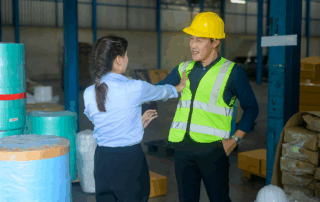Fall is a beautiful time of year, but it’s also when most wildlife-vehicle collisions occur.
More than 300,000 of such incidents happen yearly between October and December, according to the Federal Highway Administration.
To reduce your odds of being involved in an animal-related collision, follow these tips:
- Stay focused while driving. Check your mirrors regularly so you always know what is going on around you.
- Use your high beams at night to see animals easier. Look for shiny eyes on the roadsides. Animals’ eyes often glow when meeting headlights.
- Watch your speed while driving. Animals are unpredictable and often dart into the road. Lowering your speed will allow you greater reaction time if this happens.
- Do not swerve your vehicle. If you see an animal, slow down and gradually stop, if necessary. Use your hazard lights so other drivers know that you’ve stopped.
What to do if you’re in an animal collision
- Pull your vehicle to the roadside. Pull your vehicle over and turn on your hazard lights. Stay off the road and out of the way of any oncoming traffic.
- Stay away from the animal. Observe the animal from inside your vehicle, but don’t approach it. Frightened or wounded animals can be dangerous and harm you. Call the authorities if the animal you struck blocks traffic and threatens other drivers.
- Contact your insurance agent. Report any damage or injuries to your insurance agent. The sooner you do, the more quickly your claim is processed.
- Check if your vehicle is safe to drive. Check if your vehicle is drivable after your collision. Any leaking fluids, loose parts, tire damage, broken lights or other damage can be safety hazards and make your vehicle unsafe to drive. Call for a tow truck if necessary.
Contact INSURICA for more personal lines insurance resources.
This article is provided for informational purposes only. The information provided herein is not intended to be exhaustive, nor should it be construed as advice regarding coverage. Eligibility for coverage is not guaranteed and all coverages are limited to the terms and conditions contained in the applicable policy. © 2024 Zywave, Inc. All rights reserved.
About the Author
Share This Story
Related Blogs
Trump Administration Reshapes Health Plan Oversight
The Trump administration has issued a series of executive orders aimed at recalibrating federal oversight of employer-sponsored health plans. These directives target unpublished rules and agency enforcement priorities, signaling a shift toward deregulation and increased flexibility for plan sponsors.
Keeping Our Workplace Violence-Free
Although we do our best at to keep the workplace safe, violence inflicted by an outsider or between employees remains a serious safety and health issue. It can occur inside or outside the workplace and can range from threats and verbal abuse to physical assaults and homicide. In fact, according to the United States Department of Labor, workplace violence is the fourth-leading cause of fatal occupational injury in our country.
Understanding Educators Legal Liability (ELL)
Educators face unique professional exposures that go beyond standard general liability. That’s where Educators Legal Liability (ELL) coverage comes in. Understanding Educators Legal Liability is critical for school administrators, as it protects against claims related to employment practices, student rights, professional duties, and more. From wrongful termination to student disciplinary disputes, ELL can provide defense and indemnity for claims that other policies may exclude.








